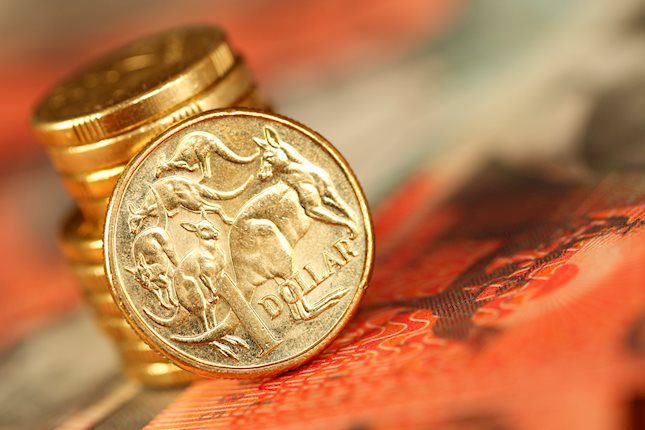- Durable Goods Orders remained almost flat in August.
- US GDP grew at an annual rate of 3.0% in the second quarter of 2024.
- Initial Jobless Claims in the US fell to 218K in the week ending September 21.
The US Dollar Index (DXY), which measures the value of the USD against a basket of six currencies, is flat after a muted market reaction to a slew of robust US economic data. The DXY is trading at 100.88 at the time of writing.
Economic data this week showed evidence of resilience in the US economy. To add to that, the Fed has already stated that its response will depend on the interplay between these contrasting signals, balancing the need to address potential risks while ensuring the ongoing health of the economy.
Daily digest market movers: US Dollar sees losses after data points, Fed speakers
- New Orders for US manufactured durable goods remained virtually unchanged in August, rising by a marginal $0.1 billion to $289.7 billion, marking the sixth increase in the last seven months.
- Excluding transportation, New Orders increased by 0.5%, driven by a 1.9% rise in electrical equipment, appliances, and components. Excluding defense, new orders declined by 0.2%.
- Gross Domestic Product (GDP) in the US grew at an annual rate of 3.0% in the second quarter of 2024, in line with the initial estimate.
- Initial Jobless Claims in the US fell to 218K in the week ending September 21, below both the consensus estimate of 225K and the previous week's revised figure of 222K.
- The data supports the notion that the economy holds steady with no need of aggressive easing.
- In the meantime, Fed speakers are trying to push more dovish rhetoric.
- Atlanta Fed President Raphael Bostic highlighted that a 50-basis-point cut puts the central bank in a stronger position to handle economic uncertainties.
- Similarly, Minneapolis Fed President Neel Kashkari pointed out that a larger cut provides the Fed with more aggressive tools if inflation continues to ease.
- Chicago Fed President Austan Goolsbee echoed this sentiment, noting that a significant cut now gives the Fed greater room to adjust if economic conditions worsen.
- Fed Governor Michele Bowman dissented, favoring a more cautious 25-basis-point reduction, reflecting concerns about moving too aggressively.
DXY technical outlook: DXY momentum reverses with continued bearish dominance
Technical analysis of the DXY index reveals that the Relative Strength Index (RSI) and Moving Average Convergence Divergence (MACD) indicators suggest bearish momentum, with the RSI remaining in negative territory and the MACD printing flat green bars. This indicates weak buying pressure and suggests a continuation of bearish dominance.
Additionally, the strong resistance level at 101.00 limits the upside potential for the US Dollar. Key support levels include 100.50, 100.30 and 100.00, while resistance levels are located at 101.00, 101.30 and 101.60.
RBA FAQs
The Reserve Bank of Australia (RBA) sets interest rates and manages monetary policy for Australia. Decisions are made by a board of governors at 11 meetings a year and ad hoc emergency meetings as required. The RBA’s primary mandate is to maintain price stability, which means an inflation rate of 2-3%, but also “..to contribute to the stability of the currency, full employment, and the economic prosperity and welfare of the Australian people.” Its main tool for achieving this is by raising or lowering interest rates. Relatively high interest rates will strengthen the Australian Dollar (AUD) and vice versa. Other RBA tools include quantitative easing and tightening.
While inflation had always traditionally been thought of as a negative factor for currencies since it lowers the value of money in general, the opposite has actually been the case in modern times with the relaxation of cross-border capital controls. Moderately higher inflation now tends to lead central banks to put up their interest rates, which in turn has the effect of attracting more capital inflows from global investors seeking a lucrative place to keep their money. This increases demand for the local currency, which in the case of Australia is the Aussie Dollar.
Macroeconomic data gauges the health of an economy and can have an impact on the value of its currency. Investors prefer to invest their capital in economies that are safe and growing rather than precarious and shrinking. Greater capital inflows increase the aggregate demand and value of the domestic currency. Classic indicators, such as GDP, Manufacturing and Services PMIs, employment, and consumer sentiment surveys can influence AUD. A strong economy may encourage the Reserve Bank of Australia to put up interest rates, also supporting AUD.
Quantitative Easing (QE) is a tool used in extreme situations when lowering interest rates is not enough to restore the flow of credit in the economy. QE is the process by which the Reserve Bank of Australia (RBA) prints Australian Dollars (AUD) for the purpose of buying assets – usually government or corporate bonds – from financial institutions, thereby providing them with much-needed liquidity. QE usually results in a weaker AUD.
Quantitative tightening (QT) is the reverse of QE. It is undertaken after QE when an economic recovery is underway and inflation starts rising. Whilst in QE the Reserve Bank of Australia (RBA) purchases government and corporate bonds from financial institutions to provide them with liquidity, in QT the RBA stops buying more assets, and stops reinvesting the principal maturing on the bonds it already holds. It would be positive (or bullish) for the Australian Dollar.
Information on these pages contains forward-looking statements that involve risks and uncertainties. Markets and instruments profiled on this page are for informational purposes only and should not in any way come across as a recommendation to buy or sell in these assets. You should do your own thorough research before making any investment decisions. FXStreet does not in any way guarantee that this information is free from mistakes, errors, or material misstatements. It also does not guarantee that this information is of a timely nature. Investing in Open Markets involves a great deal of risk, including the loss of all or a portion of your investment, as well as emotional distress. All risks, losses and costs associated with investing, including total loss of principal, are your responsibility. The views and opinions expressed in this article are those of the authors and do not necessarily reflect the official policy or position of FXStreet nor its advertisers. The author will not be held responsible for information that is found at the end of links posted on this page.
If not otherwise explicitly mentioned in the body of the article, at the time of writing, the author has no position in any stock mentioned in this article and no business relationship with any company mentioned. The author has not received compensation for writing this article, other than from FXStreet.
FXStreet and the author do not provide personalized recommendations. The author makes no representations as to the accuracy, completeness, or suitability of this information. FXStreet and the author will not be liable for any errors, omissions or any losses, injuries or damages arising from this information and its display or use. Errors and omissions excepted.
The author and FXStreet are not registered investment advisors and nothing in this article is intended to be investment advice.
Recommended content
Editors’ Picks

AUD/USD corrects toward 0.6850, awaits US PCE Price Index
AUD/USD is falling back toward 0.6850 in Friday's Asian trading, reversing from near 19-month peak. A tepid US Dollar bounce drags the pair lower but the downside appears called by the latest Chinese stimulus measures, which boost risk sentiment ahead of US PCE data.

USD/JPY pares gains toward 145.00 after Tokyo CPI inflation data
USD/JPY is paring back gains to head toward 145.00 in the Asian session on Friday, as Tokyo CPI inflation data keep hopes of BoJ rate hikes alive. However, intensifying risk flows on China's policy optimism support the pair's renewed upside. The focus shifts to the US PCE inflation data.

Gold price consolidates below record high as traders await US PCE Price Index
Gold price climbed to a fresh all-time peak on Thursday amid dovish Fed expectations. The USD languished near the YTD low and shrugged off Thursday’s upbeat US data. The upbeat market mood caps the XAU/USD ahead of the key US PCE Price Index.

Avalanche rallies following launch of incentive program for developers
Avalanche announced the launch of Retro9000 on Thursday as part of its larger Avalanche9000 upgrade. Retro9000 is a program designed to support developers with up to $40 million in grants for building on the Avalanche testnet.

RBA widely expected to keep key interest rate unchanged amid persisting price pressures
The Reserve Bank of Australia is likely to continue bucking the trend adopted by major central banks of the dovish policy pivot, opting to maintain the policy for the seventh consecutive meeting on Tuesday.

Five best Forex brokers in 2024
VERIFIED Choosing the best Forex broker in 2024 requires careful consideration of certain essential factors. With the wide array of options available, it is crucial to find a broker that aligns with your trading style, experience level, and financial goals.